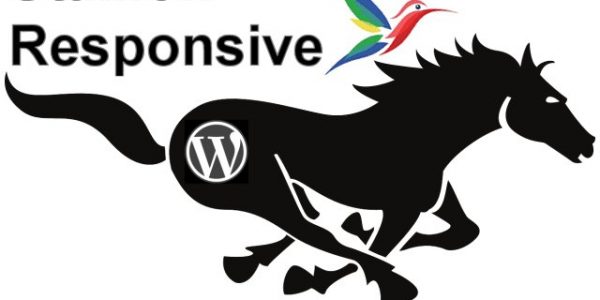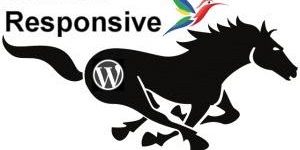Comment on Stallion Responsive WordPress SEO Theme by SEO Dave.

It’s a heck of a lot easier to write a comment than a full post, no one expects super high quality content in comments, so you can be more informal in a comment that you wouldn’t get away with in a full article. And Google sees webpages, not posts or comments, so the Stallion SEO super comments are treated just like any other webpage, Google ranks them.
As you already have WordPress installed you have one of two choices.
If your WordPress install is the multisite version you’d be able to create a new blog in a subdirectory now: you probably don’t have multisite, go to your Dashboard, if it’s multisite in the top left hand corner you’ll see a “My Sites” link, hoverover and it will show “Network Admin”, that’s where you make new sites.
Going to assume you don’t have that.
Probably the easiest way to test a theme without using it on your current live site is install WordPress again in a subdirectory.
It’s important not to use a subdirectory name your website already uses. If you have a page that loads when you go to example.com/news/ using the sub-directory /news/ would break that section of your live site. For testing best to use something you are unlikely to every use, I create a lot of SEO articles, so I couldn’t add a sub-directory /seo/ but I could use /seotest/ because I’m unlikely to create a page with /seotest/ as part of the URL slug.
You might be able to install WordPress in a sub-directory via your control panel, no idea if HostGator has that option, if it does it will save you creating a database for the new install. I’ve got one cheap Godaddy WordPress hosting package (rest of my sites are on VPS servers) and the Godaddy hosting does have a quick WordPress setup option: pretty much gets you to WordPress installed, login and create content, set a theme etc…
If not in your HostGator control panel (never used HostGator, so don’t know how) create a new database for the test install and note down the details for accessing the database.
If you are familiar with FTP it’s easy-ish :-) to install WordPress.
Download the WordPress zip file from https://wordpress.org/download/
Unzip on your PC, you’ll have a new folder /wordpress-3.9.1/ in that folder you’ll find the folder /wordpress/
Rename the unzipped /wordpress/ folder to whatever subdirectory you plan to use /newstest/ for example, you’ll now have:
/wordpress-3.9.1/newstest/
If this was a new install you would go into /newstest/ rename wp-config-sample.php to wp-config.php, load the wp-config.php file in a text editor and add your database details as supplied by your host HostGator (you can do this if you want).
Since you already have a WordPress install it might be easier to download (via FTP) your current sites wp-config.php file, put a copy in /newstest/, open that in a text editor and change the settings, these three settings:
/** The name of the database for WordPress */
define('DB_NAME', 'database_name_here');
/** MySQL database username */
define('DB_USER', 'username_here');
/** MySQL database password */
define('DB_PASSWORD', 'password_here');Reasonably good chance only “database_name_here” and “password_here” with “username_here” being the same for both databases. You get these from HostGator.
The rest of the settings shouldn’t need changing.
Don’t leave the “database_name_here” the same as for your main WordPress wp-config.php file, the test install will access your live sites database and change it. We want the test install to use a new separate database.
With the edited wp-config.php file upload the /newstest/ directory (don’t upload the /wordpress-3.9.1/ folder) to the root (root is where you see the current wp-config.php file) of your site using FTP.
When everything is uploaded go to domain.com/newstest/ and follow the Install WordPress instructions.
Login and follow the Best Way to Install Stallion Responsive instructions.
From the webpage above about child themes:
Many WordPress users are not familiar with WordPress Child themes, child themes add the ability to include extra features to a main parent theme allowing you to gain even more flexibility over WordPress. The Stallion Responsive SEO package relies heavily on a child theme (it’s free), it contains hundreds of images you can use as thumbnails, headers and banners within your WordPress powered website.
The Meganews WordPress Theme you linked to, though looks nice is awful SEO wise, you aren’t going to be able to create a site similar to that with Stallion: similar in the sense of exact color scheme and all the flashy features, the general structure pretty much any WordPress theme creates that sort of site structure.
Google has moved towards usability and performance metrics in recent algorithm updates, we have to care how fast a website loads, how easily a user can get to the content.
Google has a free testing tool called PageSpeed Insights (it’s relativity new and evolving). Check the MegaNews theme out http://developers.google.com/speed/pagespeed/insights/?url=http%3A%2F%2Ftrendis.si%2Fwp-themes%2Fmeganews%2F&tab=mobile
Those are not good results, 39/100 for mobile and 49/100 for desktop. If you wanted good results with that theme you’d have to disable a lot of the flashy features.
Under Mobile click the “Show how to fix” link for “Eliminate render-blocking JavaScript and CSS in above-the-fold content”.
The MegaNews theme adds over 20 javascript files and a further dozen plus CSS files to create that look!!!
That is TERRIBLE Google SEO wise.
To add flashy features there tends to be a lot of javascript added to a theme and it’s going to have a negative impact on your Google rankings. Load that page on your phone, does it load fast (I didn’t check)?
Like I said Google’s PageSpeed Insights tool is relatively new and evolving, when I ran this site through the tool a few months ago (not long after releasing Stallion Responsive v8.0) it was scoring in the 90/100 range (they didn’t have a user experience section of results), Google has added new metrics to the tool and it’s resulted in the score dropping (working on the fixes for Stallion Responsive v8.1: got some inline CSS for tap target issues on this site now to test some CSS fixes, it’s why the paged comments number are so blinking big).
No way I can fix everything, if you check the home page results (which I’m not happy with), as I know these test results are important I’m looking for fixes: http://developers.google.com/speed/pagespeed/insights/?url=http%3A%2F%2Fstallion-theme.co.uk%2F&tab=desktop
You’ll note most of the Leverage browser caching issues are with AdSense code and FaceBook like buttons:
# http://connect.facebook.net/en_US/all.js (20 minutes)
# https://apis.google.com/js/api.js (30 minutes)
# https://apis.google.com/js/plusone.js (30 minutes)
# http://pagead2.googlesyndication.com/pagead/expansion_embed.js (60 minutes)
# http://pagead2.googlesyndication.com/pagead/js/adsbygoogle.js (60 minutes)
# http://pagead2.googlesyndication.com/pagead/osd.js (60 minutes)
# https://oauth.googleusercontent.com/…e:rpc:shindig.random:shindig.sha1.js?c=2 (60 minutes)
If I turn the FaceBook like button and AdSense off no more Leverage browser caching issues. Same with minify javascript, it’s Google’s own AdSense code to blame!
Even the User Experience Issues are mostly AdSense.
Stallion Responsive is feature rich, but without causing unnecessary SEO damage. I could add those flashy features, but it would be at the cost of Google SEO traffic and Stallion Responsive is foremost a WordPress SEO package.
I’ll also add you should do some research on how visitors actually react to some of these flashy features, image sliders for example are pretty much ignored by users. They might click the first image in the slide, but because they tend not to add useful features (look awesome, but don’t add anything, fluff basically added by webmasters because it looks cool rather than serves a purpose) users have become blind to them.
Stallion includes an image slider feature and an accordion image navigation menu, both require additional javascript files loading, I don’t use those features on my sites even though I’ve optimized the code best I can.
David


More Comments by SEO Dave
Stallion Responsive SEO Theme
Free Premium WordPress SEO Plugins, Maybe?
As you know when I do updates it tends to be everything and the kitchen sink added to Stallion Responsive, so you’ll be missing some major feature updates. Since 8.2.2 there’s been three updates and that’s a LOT of changes, …
Continue Reading Responsive WordPress SEO Package
Stallion Responsive SEO Theme
WP Rocket Caching Plugin : Enable Caching for Mobile Devices
Hey Eric, hope things are going well.
I’m not familiar with the WP Rocket Caching Plugin (premium product) mainly as I use W3 Total Cache.
I can’t think of anything obvious that would cause an issue, all the Stallion Responsive mobile responsive …
Continue Reading Responsive WordPress SEO Package
Stallion Responsive SEO Theme
PHP Error: Warning: POST Content-Length of bytes exceeds the limit of 8388608 bytes in Unknown on line 0
That’s not a WordPress child theme issue per se, it’s not even a WordPress issue per se it’s a PHP error warning due to a PHP setting being set a bit low.
What’s happening is your post_max_size (max upload size of …
Continue Reading Responsive WordPress SEO Package
Stallion Responsive SEO Theme
Adding a WordPress Optin Form Widget
Stallion Responsive includes 26 widget areas (plus an unlimited number you can make via a Stallion feature), there’s 5 widget areas related to the header area, several of them could be used to achieve what you want by adding a …
Continue Reading Responsive WordPress SEO Package
Stallion Responsive SEO Theme
Testing the Stallion Responsive SEO Theme
The Stallion Responsive license is unlimited domains you own, so yes one off $40 for your entire network. If you sell a site with Stallion on, you need to buy a separate license.
Stallion Responsive is a theme not a plugin, …
Continue Reading Responsive WordPress SEO Package
Stallion Responsive SEO Theme
Updating a WordPress Child Theme
On the sidebars issue, if it’s the Stallion SEO Posts widgets (the popular/recent posts one) that’s playing up (blank output), go to Appearance >> Widgets and edit the widgets and click the Save button. Have added new options to the …
Continue Reading Responsive WordPress SEO Package
Stallion Responsive SEO Theme
Webpage Rendering Explained
On webpage rendering I don’t see what you see when I loaded your site, but I know what you are referring to.
As the browser loads your webpage it’s trying to rendering the content as it ‘reads’ the files from top …
Continue Reading Responsive WordPress SEO Package
Stallion Responsive SEO Theme
Google Rankings Drop After WordPress Theme Update
Highly unlikely to be due to the Stallion update, looks like a coincidence.
I checked your cache and looks like you were running Stallion Responsive 8.2.1 (released January 2015) before the update. With the 8.2.2 (released April 15th 2015) the only …
Continue Reading Responsive WordPress SEO Package
Stallion Responsive SEO Theme
Updating Stallion Responsive Child Theme
If your last update has been a while and you modified fonts manually (manually editing CSS files) you’ll probably have to start again with the modifications: not possible for me to explain how to make changes when I don’t know …
Continue Reading Responsive WordPress SEO Package
Stallion Responsive SEO Theme
Stallion Responsive 8.2.2 Update
New Stallion Responsive update version 8.2.2 includes new silo SEO options added to the Stallion SEO Posts Widget (see Popular Articles widget on menu for example output).
In Stallion v8.2.1 you could set the SEO widgets posts to be pulled from …
Continue Reading Responsive WordPress SEO Package
Stallion Responsive SEO Theme
Stallion Responsive SEO Theme Example Sites
This site runs Stallion Responsive as do:
# http://skinny-me.co.uk/
# http://www.general-election-2010.co.uk/
# http://www-news.co.uk/
Tend to use the same sort of layout, colours and settings (when you like something, tend to stick with it :-)) so doesn’t do full justice to Stallion’s options.
Have some test …
Continue Reading Responsive WordPress SEO Package
Stallion Responsive SEO Theme
Stallion Responsive and WPRobot Installation
I don’t do custom work and don’t know anyone who uses Stallion Responsive with WPRobot and offers a site building service.
Sorry I couldn’t be more helpful.
David …
Continue Reading Responsive WordPress SEO Package